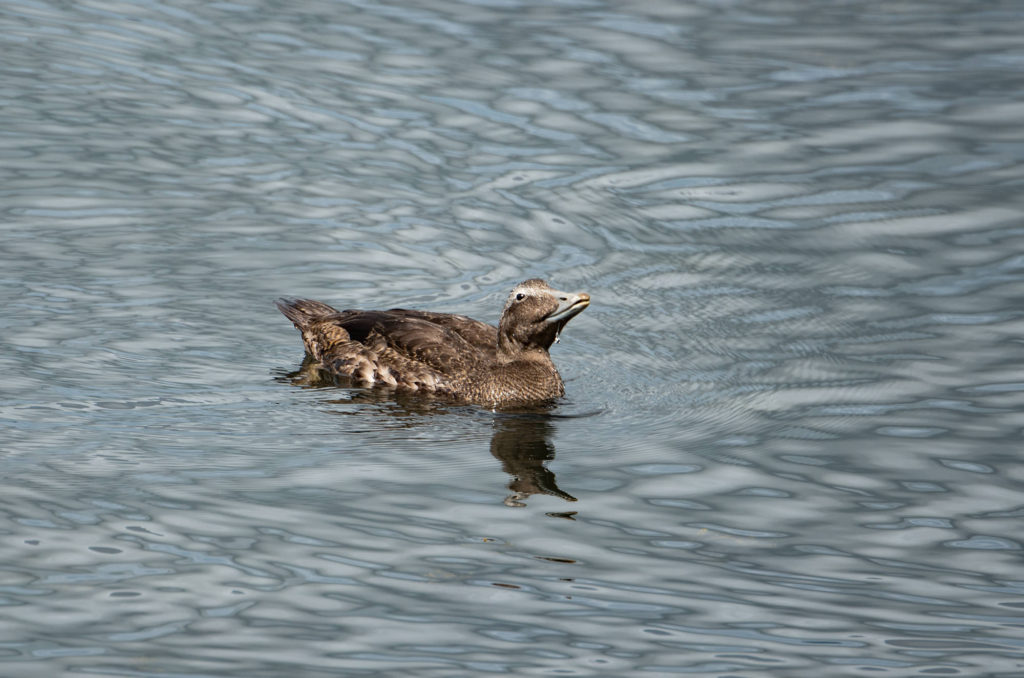You won’t find the common eider under “seabirds” in your field guide but, in my opinion, any duck that can live in a rugged coastal habitat and gulp down mussels whole is just as badass as any gull.
The name of this duck is associated by many with being warm and cosy. Eiderdown is used to stuff items like pillows, duvets, and those puffy jackets that keep out icy blasts during winter. The soft feathers from the breast of the female duck, which she plucks off and adds to the nest, are valued for their incredibly insulating and lightweight properties. In parts of Iceland, they still harvest the down traditionally. It is removed from eider duck nests only when the chicks have fledged. This is one of those examples of humans and nature working seamlessly together. The harvesters care for the ducks, protecting them from predators and disturbance at their nests. The better they support the ducks, the more ducks successfully nest, and the more down their bodyguards can collect to sell. It is a long-standing symbiotic relationship that benefits both eider and down collector.
Sadly, not all feathers used in our bedding and clothing are harvested in such a humane way. The majority of feathers are a byproduct of the meat industry but live-plucking – where the plumage is ripped out while the bird is still alive – still takes place. My advice is to pick a synthetic alternative unless you want to pay upward of $16,000 for a quilt or $2,000 for a jacket. The ethically sourced eiderdown is a multi-million dollar industry.
Back to the bold and beautiful birds themselves, I captured the image below in August on a stroll by the Clyde. We regularly see eiders on this stretch of water, but it was lovely to be able to watch this juvenile from the walkway without risking disturbing him. I identified this as a young male due to the pale stripe over his eye.

This species is surprisingly hefty, at around 2kg, and ridiculously speedy for a duck – having been clocked at around 47mph in steady level flight, making them one of the UK’s fastest flying birds. Ok, they make the soft Frankie Howerd-style “oooh” calls, but the only really soft thing about this species is the down they are famed for. Let’s be honest; they don’t even look like ducks. There is something of the destrier about that long sloping forehead and wedge-shaped bill. As I said, just as badass as any gull.

